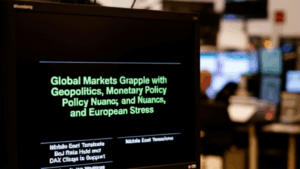USD/JPY Could Break Lower on No Policy Change From BoJ and Rising Global Risks
In the intricate world of global finance, currency pairs are often the frontline indicators of shifting economic tides and geopolitical tremors. Among them, the USD/JPY pair, representing the exchange rate between the US Dollar and the Japanese Yen, holds a unique position, acting as a barometer for both interest rate differentials and global risk sentiment. Lately, market analysts have sharpened their focus on this pair, with increasing speculation that it could be poised for a significant downward movement, driven primarily by the Bank of Japan’s (BoJ) steadfast monetary policy and an intensifying backdrop of global uncertainties.
The narrative around USD/JPY has long been dominated by the stark contrast in monetary policies between the US Federal Reserve and the Bank of Japan. While the Fed, like many other major central banks, embarked on an aggressive tightening cycle to combat inflation, the BoJ has remained an outlier, steadfastly adhering to its ultra-loose monetary policy framework, including negative interest rates and yield curve control (YCC). This divergence has historically weakened the yen, making Japanese assets less attractive to yield-seeking investors and pushing the USD/JPY pair to multi-decade highs. For months, market participants have eagerly anticipated a potential pivot from the BoJ, with each policy meeting scrutinized for any hint of a shift away from its accommodative stance. Rising inflation in Japan, coupled with robust wage growth figures, has fuelled expectations that the central bank might finally begin to normalize policy, perhaps by abandoning its negative interest rate policy or adjusting YCC. However, the BoJ has consistently signalled caution, emphasizing the need for sustainable and stable inflation, coupled with stronger domestic demand, before contemplating any significant policy adjustments. This cautious approach, perceived by many as inaction, has continued to suppress the yen’s value, reinforcing the interest rate differential as a primary driver. Should the BoJ maintain its current course, as widely anticipated, it would remove a key catalyst for a substantial yen appreciation, leaving the pair vulnerable to other forces.
Enter the second, equally potent factor: rising global risks. In an interconnected world, geopolitical tensions and economic headwinds can rapidly cascade across markets, prompting investors to re-evaluate their portfolios. The Japanese Yen has traditionally served as a safe-haven currency, much like gold or the Swiss Franc, meaning that in times of heightened global uncertainty, investors tend to flock to it, driving up its value. Currently, the global landscape is fraught with such risks. Geopolitical flashpoints, from ongoing conflicts in Eastern Europe to heightened tensions in the Middle East, continue to simmer, creating an unpredictable environment. Economically, concerns about a global growth slowdown persist, with major economies grappling with inflationary pressures, high interest rates, and in some cases, significant property sector challenges. These factors collectively foster a “risk-off” sentiment, where investors become more risk-averse and seek refuge in assets perceived as stable and secure.
The interplay of these two dynamics – a static BoJ policy and an escalating global risk environment – creates a compelling case for a potential downward break in USD/JPY. While the BoJ’s dovishness tends to keep the yen weak due to unattractive yield differentials, the safe-haven demand triggered by global instability could increasingly outweigh this effect. If global risks intensify significantly, the demand for the yen could surge, leading to its appreciation against the dollar, even if the interest rate gap remains wide. This scenario would manifest as a “break lower” in the USD/JPY pair, meaning a depreciation of the US Dollar relative to the Japanese Yen. Traders and investors are keenly observing global events, from commodity price movements to economic data releases and geopolitical headlines, as these will likely dictate the next major move for the pair. The consensus among many analysts is that while the BoJ remains on hold, any sharp deterioration in global sentiment could quickly change the calculus, making the yen’s safe-haven appeal the dominant driver and potentially pushing USD/JPY well below current levels. The coming weeks will undoubtedly offer a clearer picture of which force ultimately prevails in this tug-of-war.





